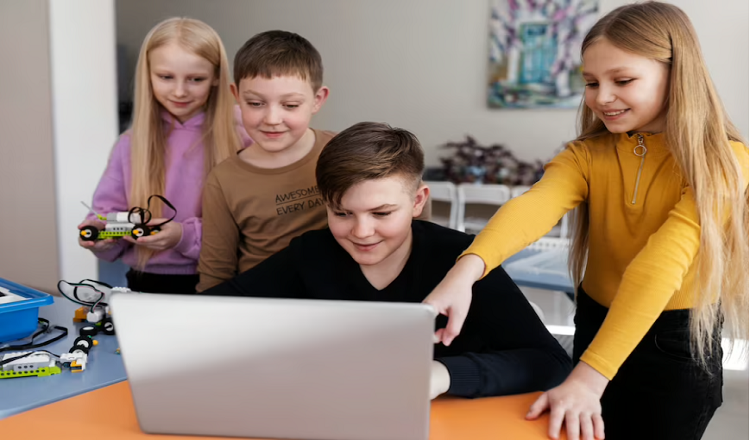In the modern world, where kids from different backgrounds, cultures, and abilities go to school, inclusive education is very important. Education systems need to recognise that each student has different learning needs and styles that need to be met for them to get the most out of their education. Assistive technologies have made a big difference in creating an inclusive learning setting for students with disabilities, learning problems, or anything else that gets in the way of their learning. The goal of this piece is to talk about how important assistive technology is and how it can be used to make learning easier and more accessible for all students.
What is technology that helps people?
Assistive technology is any piece of equipment, system, or software that helps people with disabilities learn, communicate, move around, or do daily tasks. Assistive technology is often used in the classroom to help children with mental, physical, or sensory disabilities. With the help of assistive technology, students with disabilities can take part in and learn from school activities and lessons.
Helpful technology comes in many forms.
Assistive technology has a wide range of uses. It can be grouped into three main types:
Learning and Brain Tools
Aids for learning and thinking are made to help students who have trouble learning or challenges. Some examples are:
– Software that turns text into speech
– Keyboards that adapt
– Speech recognition software – Mind mapping software that runs on a computer – Electronic tools with big screens
Helps to Move
Mobility aids are tools that help students who have physical disabilities move around better. Some examples are:
– Wheelchair ramps – Mobility bikes – Prosthetic arms – Crutches
Sensory supports
Sensory tools are made to help students who have problems with their senses. Some examples are:
Screen readers, magnifiers for text, hearing aids, and cochlear implants.
Use of helpful technology has many advantages
There are many perks to using assistive technology in the classroom, such as:
Better Experience of Learning
With the help of assistive technology, students with learning, sensory, or physical challenges can easily take part in classroom activities, work with their peers, and get to course materials. This makes it easier for kids to learn, which helps them reach their full potential.
Gained more freedom
With the help of assistive technology, students with disabilities can do everyday jobs on their own, which builds their independence and confidence.
Taking care of people with special needs
Assistive technology helps teachers meet the special needs of each student, which often leads to more personalised teaching and help. This helps students do better and keeps them from being left out.
Some examples of how helpful technology is used in school
In schooling, assistive technology is used a lot. Here are just a few:
Screen reader
Screen readers are pieces of software that can be put on computers, smartphones, and tablets to read words out loud. They help kids who have trouble seeing or who have trouble learning.
Software for recognising speech
Speech recognition software is a tool that lets students say words, phrases, or lines that are then turned into text. This helps students who find it hard to type or write.
Pen Smart
Smart pens are computer pens that let you write or draw on paper directly. They often have ways to record audio, so students can listen to their notes and lectures again afterward.
Using Assistive Technology in the Classroom
At first, it might seem hard to use assistive technology in schooling. Here’s what you need to do:
Look at what students need.
Do an evaluation to figure out what each student who needs assistive technology needs. The right technology will be picked if the specific needs of the students are known.
Choose the right technology
Choose the equipment that will best meet the needs of each student. This could be hardware, software, or a mix of the two.
Give both students and teachers training
Give both the kids and the teachers training and help on how to use the assistive technology. This makes sure that the technology is used to its fullest extent and has the most good effects possible.
Watch and evaluate how well technology works.
Check and see how well the helpful technology is working on a regular basis. This makes sure that the devices work well and that the students’ needs are still being met.
In the end,
In conclusion, assistive technology is an important part of making learning environments available and open to everyone. No matter how smart or disabled a student is, teachers need to make sure they are meeting each student’s unique learning needs. Using helpful technology in the classroom is a big chance to reach this goal and make sure everyone has the same chances in education.
Read More You May like:

